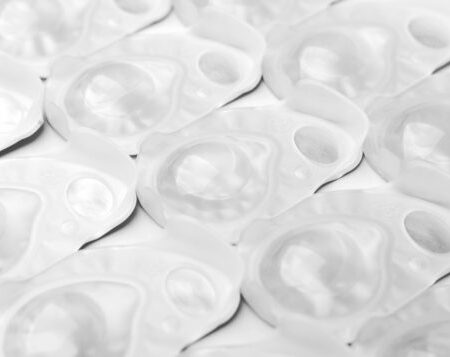Have you ever experience an “oh no” moment after you discarded your last pair of contacts and ugh, had to resort to wearing glasses? Or maybe you are the type of person who treats your contact lenses like the pile of food-encrusted dishes sitting in your sink for a week! If so, we just might have the answer — read on to learn everything you need to know about disposable contacts but were afraid to ask. As for the dirty dishes in your sink — sorry, we can’t help you with that.
What are Disposable Contact Lenses
Introduced by Johnson & Johnson subsidiary Vistakon in 1987, Acuvue disposables changed the lives of many contact lens wearers. And more than 30 years later, Acuvue still enjoys a reputation as one of the most popular contact lens brands. Unlike traditional contacts, disposables are designed to be worn for a short period of time and discarded after wear. Most eye experts consider daily disposables the healthiest option because there’s less risk of harmful build-up and they retain moisture when worn correctly. Daily disposables don’t require cleaning, so if you’re more like Pig-Pen than Charlie Brown, you should consider them!
Types of Disposable Contacts
Daily disposable contact lenses: Not to be confused with daily-wear contacts, daily disposables (also called one-day) come in individual packages and new ones are used each day. They are convenient, easy to adjust to, require no cleaning or schedules, and are not prone to lens build-up. Daily disposables are packed in a sterile solution designed to mirror natural tears, but they dry out significantly after 14 hours. Wearing them longer than recommended can lead to allergic reactions and reduced oxygen to the cornea. The latter can cause infections and even permanent damage to your eyes. Daily disposable lenses are available for most basic prescriptions, astigmatism, and presbyopia correction. Their relative ease makes them ideal for children and teens who wear contacts.
Weekly disposable contact lenses: These lenses are designed to be worn for 1 to 2 weeks and then thrown away. They are generally thicker than dailies, which means they are more durable and less prone to tearing. They need to be stored in a clean solution every night.
Monthly disposable contact lenses: These lenses are designed to be worn for 30 days, after which they’re thrown away. You need to keep track when you opened the blister pack and store them properly in a clean case with new solution every night. Even if you don’t wear them every day during that one-month period, they should be discarded at the conclusion of this timeframe. If your prescription isn’t available in daily disposables, monthly disposables may be a good alternative.
If Contacts Could Talk
Although you may be tempted to stretch your dollar by wearing disposables longer than intended, it’s a bad idea. If contacts could talk, they’d scream NO on top of their lungs when you try this! And just like the chic designer dress you wore to that hip nightclub last night, disposables hate being worn while you sleep. Some weekly and monthly contacts are approved by the U.S. Food and Drug Administration for overnight wear, however, most experts advise against this practice because it increases the risk of infection.
Ultimately, the decision about what type of contact lens to wear is up to you and your eye doctor. Whatever type you choose, it’s important to get a thorough eye exam and fitting from an eye care specialist, follow all directions, and schedule regular exams as recommended.
Subscribe to our email newsletter to get the latest posts delivered right to your email.

